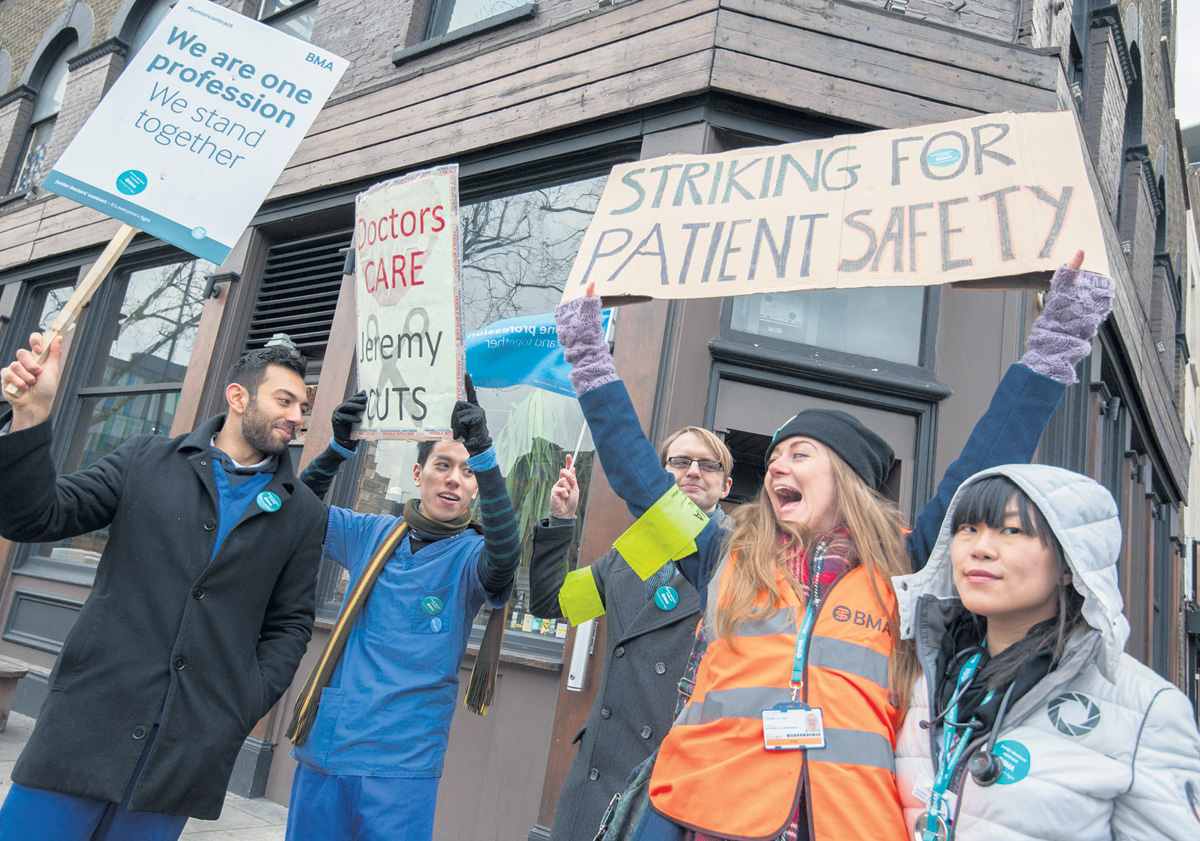Jon Dale, Secretary, Unite Nottinghamshire health (personal capacity)
The UK’s Covid hospitalisation rate is currently six times higher than other large European countries. Over five million people are waiting for NHS treatment. This could rise to between nine and 14 million by autumn 2022, according to the Institute for Fiscal Studies.
Growing frustration at the failures of the system is understandable when patients and their families can’t get the appointments, treatment and care they need. Anger can overflow and be directed at NHS staff. Ambulance staff and paramedics face the same fury after long delays caused by hold-ups unloading patients. Tempers flare in A&E, where increased security measures have been needed.
Trying to shift the spotlight from its disastrous record, Johnson’s government aims to blame general practice. The Tories’ loyal friends, the Daily Telegraph and Mail, have helped whip up this vicious campaign.
Years of NHS cuts in real terms, while the ageing population’s needs increase, meant the situation was grim before the pandemic. Tory and New Labour ‘reforms’ massively increased GP workloads, much of it linked to data collecting to help push through piecemeal NHS privatisation.
Hypocritical ministers
Last year the Tories were happy to clap NHS heroes. Now hypocritical ministers and newspaper editors imply these same workers are lazy failures. GP practices did a third more clinical administrative work – including prescriptions and referral letters – and 8% more appointments this May compared with May 2019. Covid vaccination work is on top of that.
In May when new Covid infections had fallen to 2,000 a day, the Mail on Sunday began a campaign: “Let us all see our GPs face to face again”.
In August and September, a Daily Telegraph columnist made poisonous attacks – claiming that GPs were “hiding” and “improving their work-life balance while making everyone else’s worse.”
Three-quarters of GPs report increased abuse. Receptionists are particularly exposed. In August, a Lincolnshire GP was almost blinded when an explosive device was thrown in his face. In September, four staff members at a Manchester GP practice were attacked, two of them hospitalised with serious head injuries. Earlier this month, staff at a Burton-on-Trent branch surgery walked out for two days as abuse reached intolerable levels.
Staff stress is widespread – half of all GPs report burnout, anxiety and depression. Early retirement, going part-time or leaving altogether leaves a growing shortage of GP staff, medical and non-medical. The number of fully trained full-time-equivalent GPs fell by 1,876 between 2015 and 2020.
Face-to-face consultations are essential in many situations and much preferred by many patients and doctors. But it can also be more convenient to speak on the phone rather than take a half-day off work and go to the medical centre.
In 2018, profit-making company Babylon set up ‘GP at Hand’ – an online NHS GP practice that cherry-picked mostly young, fit and tech-savvy patients, including then health secretary Matt Hancock. He described it as “revolutionary – it works brilliantly for so many patients and goes with the grain of how people access modern services. I want to see GP at Hand available to all.” Where was the outcry from the Telegraph, Mail and Tory MPs then?
And where was their outcry about giant US corporation Centene taking over 58 GP practices covering 500,000 patients? Its UK chief medical officer enthusiastically described how phone and video consultations had become “normalised” last year and these changes needed to proceed faster.
The future for general practice, if controlled by profit-seeking corporations, will be remote call centres, with less skilled and lower paid staff, supplemented by fewer, more distant clinics.
Instead, there must be sufficient GPs, nurses and other health professionals to ensure everyone gets the care they need. We need an NHS that funds local, easily accessible health centres, as part of fully funded community health services, publicly owned and democratically controlled by those who use and work in them.








